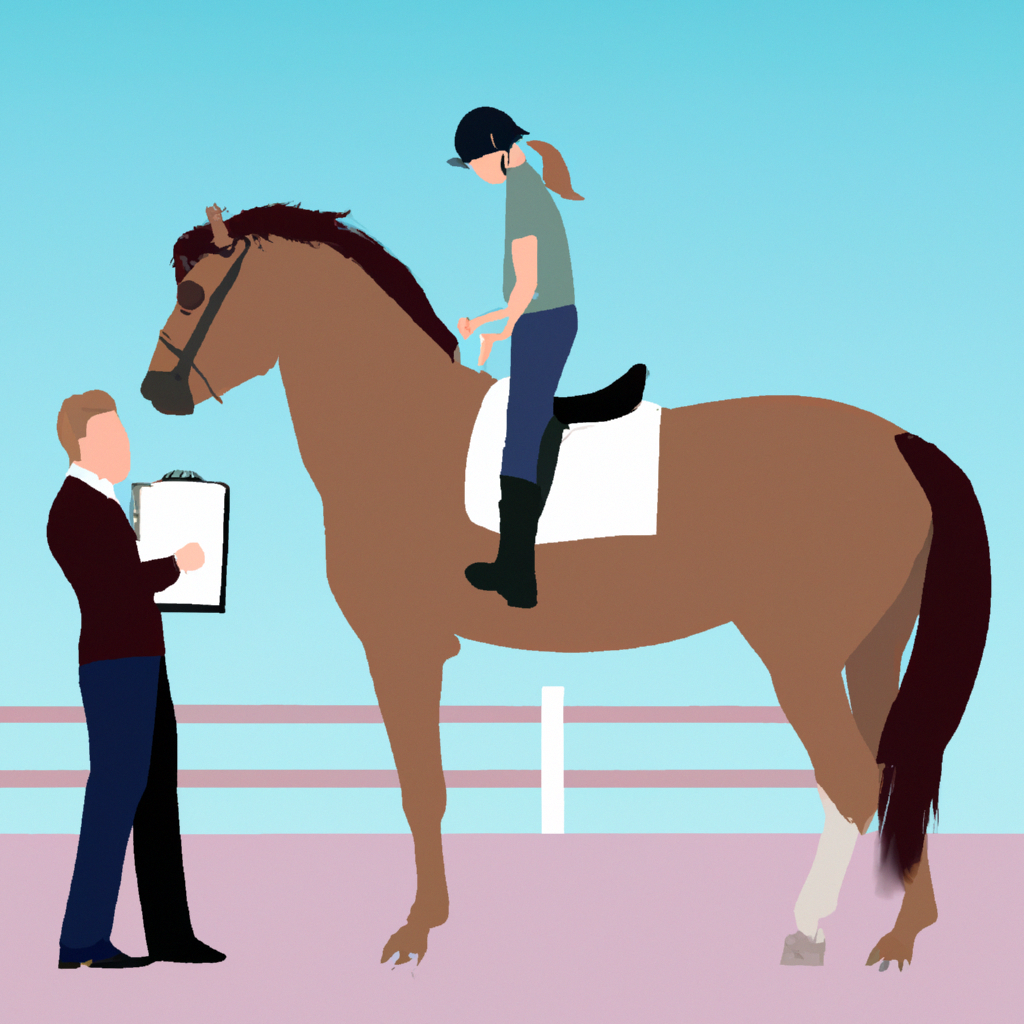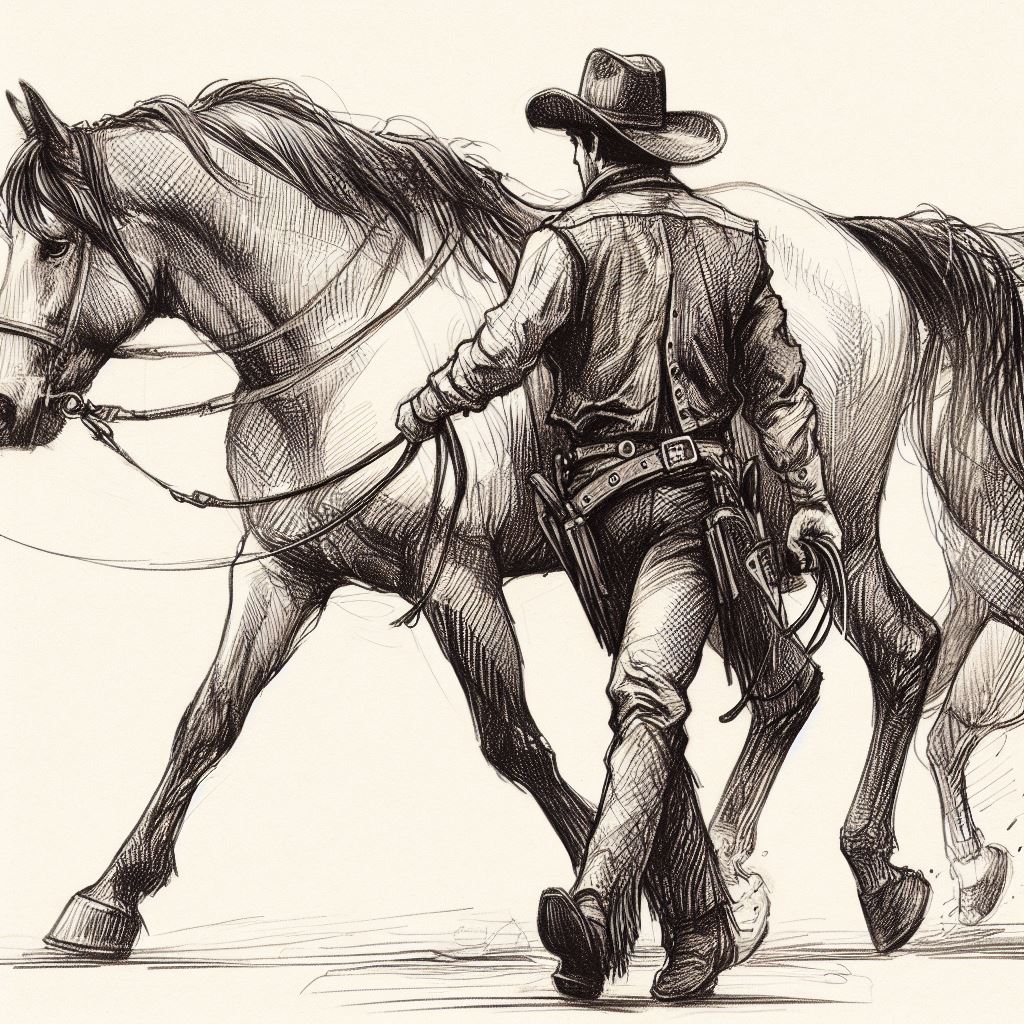Here’s a little secret everyone should know; you hold the reigns to mastering the art of horse handling. In the article “Essentials of Teaching Horse Handling,” you’ll uncover the key principles of effective horse care, communication and training techniques. As you tread along, you’ll discover how to forge a trusted relationship with these magnificent steeds, with valuable insights on how to make each equine interaction as smooth, safe and satisfying as possible. This covers everything from how to approach a horse, maintain control, to understanding equine body language. It’s an engaging read that’ll take your horse handling skills from novice to accomplished equestrian.
Understanding a horse’s nature
Think of horses as majestic, fascinating creatures with their own unique habits and personalities. As you become more involved with horse ownership, a deeper understanding of a horse’s nature can help you form stronger bonds and interact more effectively.
Learning horse behaviors
Horses, like humans, have their own set of behaviors, quirks, and traits. They communicate with each other through a series of different sounds, movements, and vocalizations. Learning these behaviors can provide valuable insight into their mental state, and can help you predict and respond to their actions appropriately.
Interpreting body language
One of the best ways to understand a horse is through body language. Their posture, ear movements, and general demeanor can all provide a snapshot into how they’re feeling. For example, a horse with pinned ears and a swished tail is sending a clear signal of irritation, while a relaxed posture with a low hanging tail and forward ears is a sign of contentment.
Understanding horse senses
Horses have powerful senses that have been finely tuned over centuries of evolution. They have a remarkable ability to see in low light, a keen sense of smell, and a highly developed sense of hearing. Understanding these senses, and how they drive a horse’s reactions, can help you better understand and predict their behavior.
Recognizing fear in horses
Recognising fear in horses is critically important. A scared horse can become unpredictably dangerous. Their eyes may widen, and they may start sweating and shaking in fear. Being aware of these signs can help neutralize any potential risks and ensure that both the horse and handler remain safe.
Teaching safe approach techniques
Approaching a horse for the first time can be both an exciting and nerve-wracking experience. It is important to remember that the way you approach a horse can drastically affect their initial perception of you.
Approaching a horse calmly
Never rush up to a horse; instead always approach calmly. This approach mirrors the horse’s naturally calm and quiet demeanor and can encourage similar behaviors in response.
Knowing where to touch a horse
Knowing where to touch a horse is also essential. Horses generally appreciate being touched on their neck or shoulder area, and tend to dislike being touched around their faces, legs, or their flank area.
Safe methods of getting horse’s attention
To get a horse’s attention without startling them, use a calm voice or a light touch on their shoulder or neck area. Always try to keep your approach slow, steady, and non-threatening.

Horse Handling Equipment
Horse handling equipment is used to control and handle a horse safely, both for the horse and for the handler. It is vital to understand how to use this equipment properly.
Understanding different types of horse handling equipment
There is a wide range of equipment available for handling horses. This can range from simple lead ropes and halters through to more complex equipment like lunging gear and bits.
Proper use of harnesses and halters
Harnesses and halters are some of the most common pieces of horse handling equipment. When fitting a halter, ensure it is snug but not too tight and that it is sitting correctly on the horse’s head.
Safety measures while using horse handling equipment
When using any horse handling equipment, safety should be your top priority. Always check the equipment for any signs of wear or damage before use, and never use equipment you are unfamiliar with without guidance.
Basic horse handling skills
Having a solid foundation of basic horse handling skills can make the difference between a calm, well-behaved horse and a stressed, unpredictable one.
Leading a horse
Leading a horse involves getting them to follow you willingly. This requires trust from the horse and clear, confident communication from you.
Turning and backing up horses
Teaching a horse to turn and back up can be incredibly useful. This can help with maneuvering in tight spaces and can assist with various exercises during training sessions.
Teaching a horse to stand still
Teaching a horse to stand still, particularly when they’re being groomed or when equipment is being fitted, is a necessary and often challenging skill. It requires patience, consistency, and positive reinforcement.
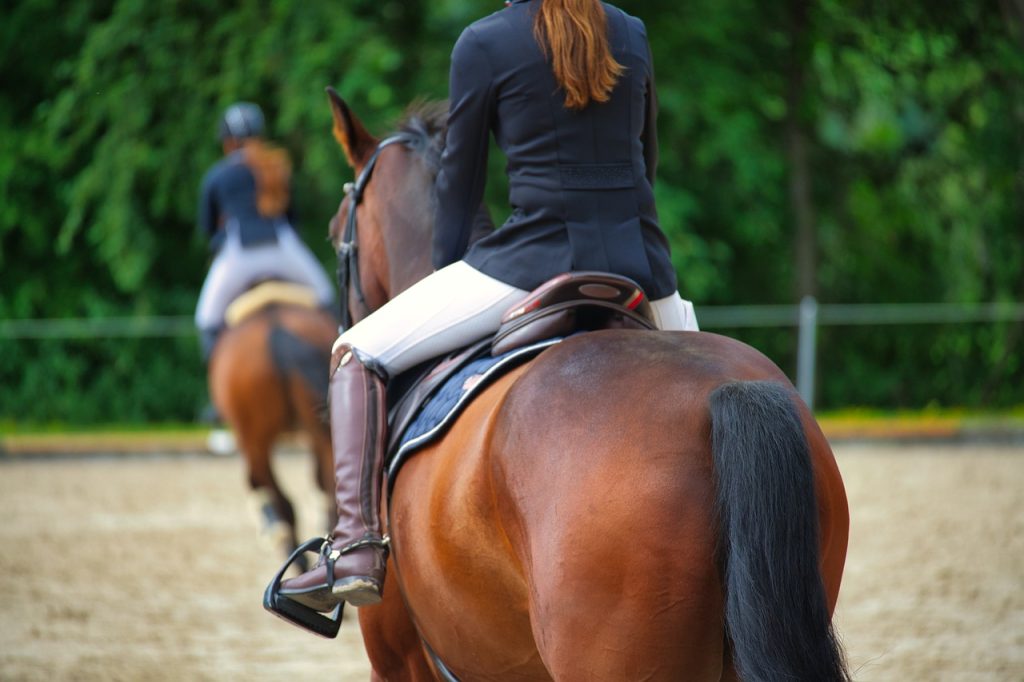
Teaching correct horse grooming
Regular grooming plays a crucial role in maintaining a horse’s overall health and wellbeing.
Tools and methods of horse grooming
Grooming a horse can involve different tools such as curry combs, body brushes, hoof picks, and mane and tail combs. Each tool has a specific use and is crucial for maintaining the horse’s coat, skin, hooves, and hair in optimal condition.
Importance of regular horse grooming
Regular grooming is necessary as it helps prevent various health issues such as skin diseases and hoof problems. Not only does it keep the horse looking good, but it also gives you a chance to build a bond with your horse.
Steps for a thorough grooming
A thorough grooming session involves cleaning the horse from head to toe. Start by brushing off any loose hair or dirt with a curry comb. Then, use a body brush to remove finer particles from the horse’s coat. Finally, clean the hooves with a hoof pick to prevent infections or diseases.
Developing bond and trust
Just like any successful relationship, trust and a strong bond are key when it comes to working with horses.
Importance of building a relationship with a horse
Building a relationship with a horse goes beyond just riding. It involves spending time with them, understanding their behaviors, and learning how to communicate effectively.
Techniques to gain horse’s trust
Gaining a horse’s trust can take time and patience. This can be achieved by spending quality time with the horse, consistent behavior, and gentle handling.
Maintaining rapport and respect with the horse
Equally essential is maintaining that built rapport and respect with the horse. This can be done by treating the horse with kindness and respect, maintaining consistency in your actions, and rewarding good behavior.
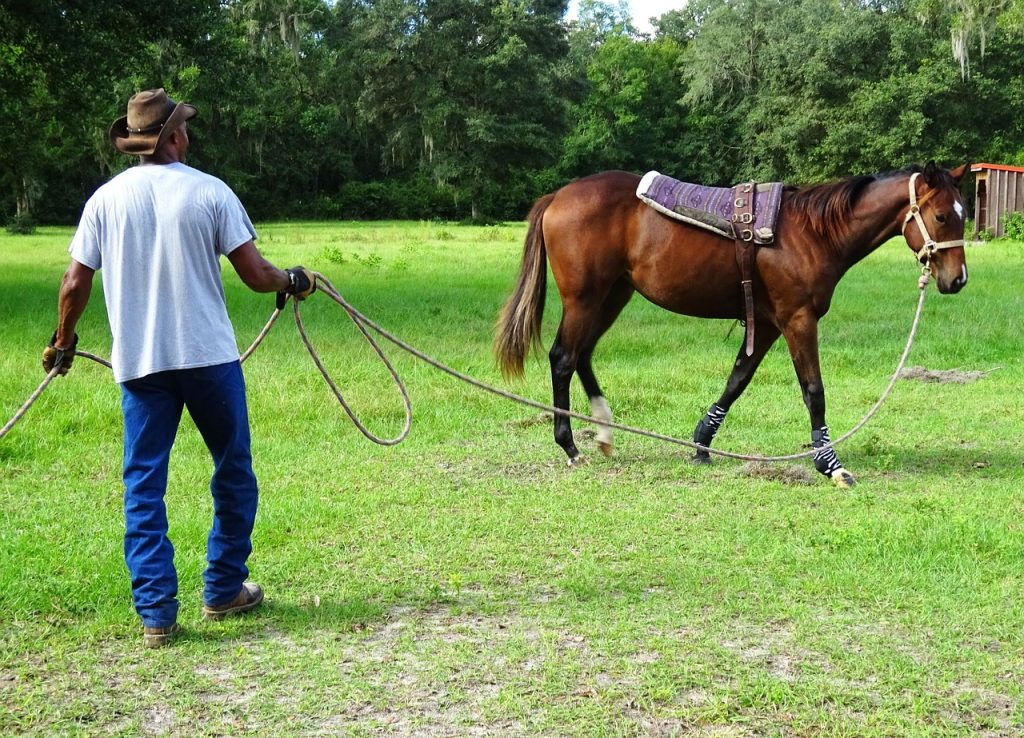
Teaching how to handle horse in different scenarios
Horses can behave differently under various scenarios such as during medical treatment, in different weather conditions, or when they are scared or nervous.
Handling a horse during medical treatment
Handling a horse during medical treatment can be challenging as the horse may be afraid or in pain. It’s important to be calm, patient, and use soothing voice tones to keep the horse relaxed.
Training horses for different weather conditions
Whether it’s hot, cold, rainy, or windy, horses need to be prepared to handle all types of weather conditions.
Dealing with a scared or nervous horse
When dealing with a scared or nervous horse, your actions and behaviors can make a big difference. Always approach the horse calmly and try to reassure them with a gentle voice and comforting touches. Avoid any sudden movements or loud noises that could further scare the horse.
Understanding horse feeding and nutrition
Proper feeding and nutrition are fundamental for a horse’s health, performance and longevity.
Understanding horses’ dietary needs
Horses have specific dietary needs which consist of a good balance of forage, grains, vitamins, and minerals. Their diet should fulfill their energy, growth, and health requirements.
Safe treats and harmful foods for horses
While horses enjoy treats, certain foods can be harmful. Some safe treats include carrots, apples, and other horse-friendly fruits while Chocolate, lawn clippings, and certain fruit seeds can be harmful.
Teaching horses to eat from hand
Feeding a horse from your hand can be a wonderful bonding experience, but it should be done correctly. Always offer the treat on the flat of your hand to avoid the horse accidentally nipping your fingers.
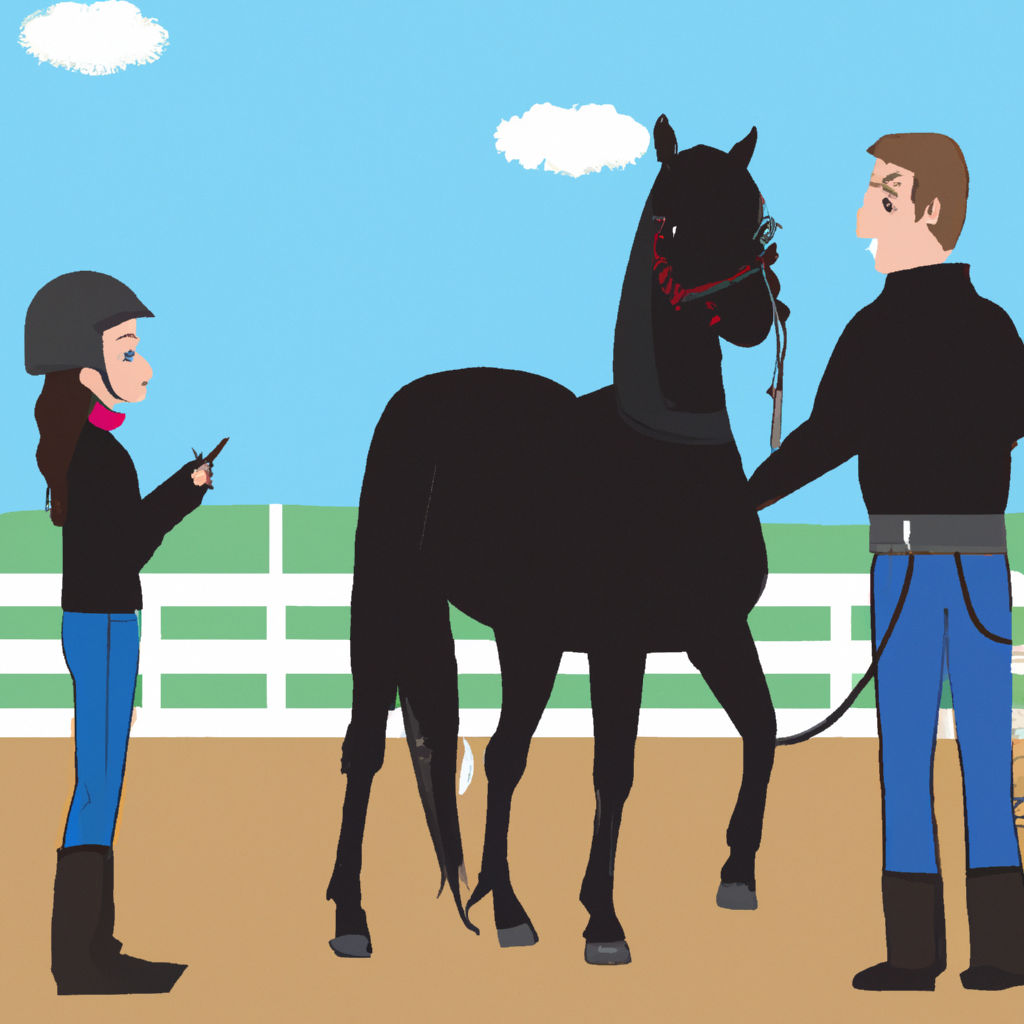
Training horse for equipment and saddling
Training a horse to accept equipment and saddling can take time and patience but is a crucial part of being handled and ridden.
Choosing the right equipment
Choosing the right equipment for your horse is vital for both their comfort and performance. The equipment should be the right fit and should be in good condition.
Proper methods for saddling
Saddling a horse properly is important for the horse’s comfort and the rider’s safety. Make sure the saddle sits correctly and the girth is tight enough to hold the saddle in place but not so tight that it discomforts the horse.
Getting horse comfortable with equipment
Acclimating a horse to equipment involves a process of slow, gradual exposure. Start by introducing the equipment slowly, then gradually increase the presence and use of it.
Understanding and managing horse health concerns
Maintaining a horse’s health requires a basic understanding of common health concerns and how to manage them.
Recognizing signs of horse illness or discomfort
Recognizing signs of a sick horse early can prevent minor issues from becoming major problems. Common signs include loss of appetite, changes in behavior, and physical abnormalities like limping, swelling, or wounds.
Understanding basics of horse healthcare
Understanding horse healthcare involves regular vet checks, vaccinations, deworming, dental care, and a proper diet and exercise routine. Knowing these basics can vastly help in maintaining their health and well-being.
Safety measures when handling a sick horse
When handling a sick horse, safety measures should be taken to protect both you and the horse. This includes using proper safety equipment, washing hands frequently, and isolating the sick horse from other horses.
